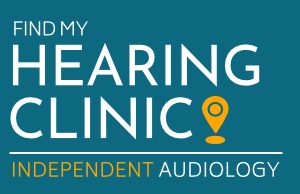How to Optimise Communication with Your Hearing Aids

Communication is essential to successfully navigating life and connecting to other people. Whether it is making a doctor’s appointment, buying something from a shop, watching a movie, or talking with a friend, we must communicate. When a person has hearing loss, their communication ability is compromised, affecting their quality of life. At Find My Hearing Clinic, our independent hearing clinics are passionate about helping people restore their ability to communicate. While hearing aids can be essential to restoring communication for a person with hearing loss, it is not as simple as just buying a pair. This blog provides practical tips for optimising communication with hearing aids.
Understanding Your Hearing Aids
Understanding your hearing aids is crucial to optimizing your communication with them. It is a good idea to know the basics of how hearing aids work. Generally speaking, they pick up sounds in your environment, process that sound, amplify the sound according to your hearing loss, and send that sound down your ear via a speaker.
There are different types of hearing aids. These include in-the-ear, completely-in-canal, behind-the-ear, and receiver-in-canal hearing aids. Understanding what type of hearing aid you have helps you optimize your communication when using them. For example, if you are holding a phone speaker to your hearing aid, knowing that the microphone is in your ear on an in-the-ear hearing aid. However, in a receiver-in-canal hearing aid, the microphone is usually behind your ear, allowing you to position the phone speaker in the place that allows you to hear the best.
There are also other features within your hearing aids that, if you understand, you can get the most out of to optimise your communication. For example, the directional microphones on most hearing aids work best when you are facing the speaker with the bulk of the noise behind you. If you know this, you can position yourself to hear your best in noisy environments. Some hearing aids also have apps or controls that you can use to adjust your hearing aids in some situations to optimise your hearing.
Optimizing Settings for Various Environments
Part of understanding your hearing aids is knowing if specific programs will help you in certain situations. Most hearing aids have some automatic function that adjusts when you move into noise. However, some still require you to change programs for specific environments, such as very noisy situations or when listening to music. Knowing what programs are in your hearing aids and the capabilities of these programs allows you to hear your best.
Knowing these programs might be an option for you is also essential if you struggle with a particular situation. If this is the case, it is essential to let your independent hearing care professional know, and they can discuss whether setting up a situation-specific program will likely help. Doing this is a collaborative effort between you and your independent hearing care professional, so let them know what you are struggling with so they can help.
Effective Communication Strategies
Hearing aid technology has improved dramatically to optimise sound quality for people with hearing loss. However, the best formula for optimising communication is to use hearing aids with effective communication strategies. Communication strategies can make a big difference to how you hear and can often be simple. You can use many communication strategies, but here are our top three.
- Positioning and Proximity. Position yourself close to the person you are talking to and face them. This helps the sound reach you more directly and clearly. For example, if you are out for dinner and want to talk to someone at the other end of the table, you might change seats to make communication easier.
- Reading Cues and Non-Verbal Communication. Facing the speaker also allows you to use non-verbal cues to understand the conversation. This includes lip-reading—which most people do even if they are not aware of it—and the person’s body language. Ensuring you are positioned to see the person talking and have adequate lighting on them helps with this.
- Managing Background Noise. Hearing in background noise is often most difficult for people with hearing loss. While hearing aids have improved in their performance in background noise, it is still easier to communicate if you reduce the background noise. This might mean turning the TV or music off while talking at home, closing the door to the kitchen if the dishwasher is going, or choosing a table away from the entry, kitchen, and counter in a café.
Maintenance and Care for Optimal Performance
Hearing aids work hard for you. They are often the most used device for a person with hearing loss. However, they do need some care to keep them working well.
Hearing aids benefit from regular cleaning and maintenance. This may mean changing out parts regularly, such as wax guards, batteries, or earpieces, and cleaning them. The required maintenance is different for different hearing aids. However, your independent hearing care professional will show you how to clean and look after your hearing aids and ensure you have everything you need.
It is also essential to have regular check-ups with your independent hearing care professional. This is so your hearing loss and hearing aid performance can be checked and monitored. If your hearing changes, your hearing aid may need adjusting to optimise your settings. Your hearing care professional will let you know how often you should have regular check-ups, but if you are ever concerned you are not hearing optimally, contact your local independent hearing clinic for help.
In conclusion, optimising your communication is essential for your quality of life. Your local independent hearing clinic understands that this involves more than just selling you a set of hearing aids. Not only do you want to have your hearing aids optimally set up, but you also want to look after them and use communication strategies to get the most out of your hearing aids. If this all seems like a lot, do not worry; your local independent hearing clinic is here to support you every step of the way.
If you want to optimise your communication with hearing aids, the best place to start is to schedule a hearing test with your local independent hearing clinic. By seeing your local independent hearing clinic, you can be sure you will be supported in optimising your communication with your hearing aids.
You can find your local independent hearing clinic, through Find My Hearing Clinic – Clinic Locator
